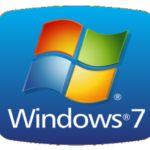Capital allows businesses to grow and expand. But capital isn’t so easy to come by when you’re just launching your company. Thankfully, businesses have the option of obtaining funds through financing.
There are ways to get the financing you need. A merchant cash advance, or MCA, is one of them. But is this method the right choice for your business?
What is a Merchant Cash Advance (MCA)?
An MCA is considered a type of business loan, but it is technically an advance. Lenders treat future credit card revenue as an asset. For this reason, they’re willing to give you a cash advance with the promise of a return in the form of a percentage of your business’s daily credit card revenue.
“With MCA Loans a fixed percentage of your debit and credit card sales automatically goes towards paying off the loan,” explains Manhattan Capital Inc., which provides MCA loans. “Unlike many bank loans, there is no collateral with MCA loans so there is no risk of losing personal assets or business”
When a business takes out an MCA loan, a daily payment is made to the financing company before credit card revenue even reaches the company’s bank account.
Because the repayment is based on the merchant’s daily account balance, the more credit card transactions a company does each day, the quicker the loan is paid off.
A merchant cash advance is one of the more expensive funding routes, but it may be the only practical option for companies that cannot get funding through a conventional business loan.
Is an MCA a Good Choice for Your Business?
A merchant cash advance isn’t the right choice for every business. The rates are a little higher than with a conventional loan, so this winds up being a more expensive option.
With that said, an MCA can provide much-needed capital to a new business or an owner with a FICO score below 600. An advance may also be a good option if you have a limited number of hard assets.
For companies that have a high number of transactions each month, like retail stores, restaurants and even nail salons, an MCA may be a good option.
One benefit to an MCA is that it won’t necessarily put a strain on your business bank account. If your transactions are lower one day, the draw from your account will also be lower. The payback is relative to your incoming cash flow.
Loan Costs and Repayment
A business that takes out an MCA will typically pay 20%-40% or more of the amount that is borrowed. This is called the factor rate. Holdback rates range from 10%-20%.
To better understand the costs of this type of loan, business owners need to understand the difference between the holdback and the factor rate.
The factor rate is the payback rate of the entire advance. The holdback is the percentage of the company’s credit card transactions that will be withheld by the financing company.
The holdback rate is based on:
- How long it takes to pay back the advance,
- The amount of money the company receives, and
- How many credit card transactions the company performs each month
When Should You Take Out an MCA?
A merchant cash advance can be taken out at any time, but the holiday season is the most popular time of year for most businesses.
Many companies are looking to increase their inventory at this time and expect an influx of credit card transactions to repay the loan.
Why Should You Choose an MCA?
Businesses need to think carefully about any finance option they choose. An MCA is just one of many financing options available to businesses, and while expensive, it does offer some advantages.
A merchant cash advance provides:
- Quick access to much-needed capital
- An easy way to pay back the loan
- A way to obtain funding if the owner has a low credit score
- Funding is provided in days or less than a day when the loan is under $100,000
If your business is in need of quick capital and you don’t have a high credit score, a merchant cash advance may be a good choice for you. Weigh your options and consider the total cost of the loan before making a final decision.








